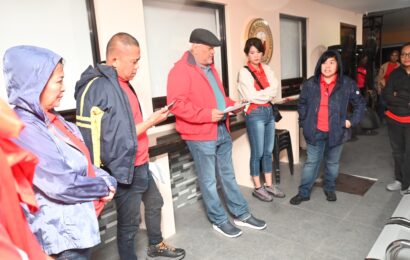CABANATUAN CITY — Department of Health (DOH) Central Luzon Center for Health Development (CLCHD) explained the prevention and treatment of walking pneumonia.

This comes in response to surveillance data indicating a 51 percent rise in Influenza-like illnesses (ILI) cases in the region, which is attributed to the cold season and increased activities during the holidays.
DOH CLCHD Infectious Diseases Cluster Medical Officer III Angelica Joy Diaz stated that walking pneumonia is one of the ILIs, caused by Mycoplasma pneumoniae.
Its symptoms include sore throat, fatigue, chest pain, mild chills, low-grade fever, persistent cough (dry or with mucus), sneezing, and headache.
Diaz emphasized that walking pneumonia is categorized as atypical pneumonia due to its milder symptoms compared to typical pneumonia.
“[Individuals with walking pneumonia] can still carry out their usual daily activities. It is called ‘walking pneumonia’ because their symptoms are usually mild, and those infected can still perform daily duties such as going to work or school,” she said.
The contagious nature of walking pneumonia spreads through respiratory droplets during coughing, with an incubation period of two to four weeks.
Diaz noted that the disease commonly affects individuals aged five to 20.
For accurate diagnosis, Polymerase Chain Reaction has proven effective, using respiratory specimens for confirmation.
In terms of treatment, medications for walking pneumonia include antibiotics and over-the-counter drugs to relieve symptoms, and increased fluid intake is also recommended.
Diaz mentioned that walking pneumonia does not require hospitalization; however, she stressed the importance of consulting a doctor for proper prescription and guidance.
“Although the majority of untreated cases resolve within two to three weeks without significant associated morbidity, treatment usually responds to appropriate antimicrobial therapy, such as antibiotics. However, patients needing antimicrobial therapy should still consult and get a prescription from their doctor,” Diaz explained.
As preventive measures, DOH recommends being well-rested by getting six to eight hours of sleep, adopting a well-balanced diet, exercising regularly, and practicing good hygiene by washing hands often with soap and water.
Other recommendations include avoiding crowded areas, covering the mouth and nose with a tissue when coughing or sneezing, wearing masks or staying at home if not feeling well, and ensuring adequate ventilation.
“For additional protection, pneumonia and flu vaccines are available. If symptoms arise, wear a face mask or refrain from leaving home. Moreover, avoid going to school or work to protect co-workers or classmates,” Diaz furthered.
Contrary to misconceptions, walking pneumonia is not a new disease, and previous DOH surveillance had detected cases.
“There have been four confirmed cases of Mycoplasma or walking pneumonia as of November 25. However, these patients have successfully recovered from the infections,” Diaz reported.
She emphasized that currently, there are no cases or outbreaks of walking pneumonia in the Philippines based on the monitoring of the Epidemiology Bureau.
While there is no cause for alarm, DOH underscores the importance of awareness and prevention.
The public is urged to stay vigilant, practice health and safety precautions, and adhere to minimum public health standards to ensure individual and collective well-being.
SOURCE: Maria Asumpta Estefanie C. Reyes PIA3





